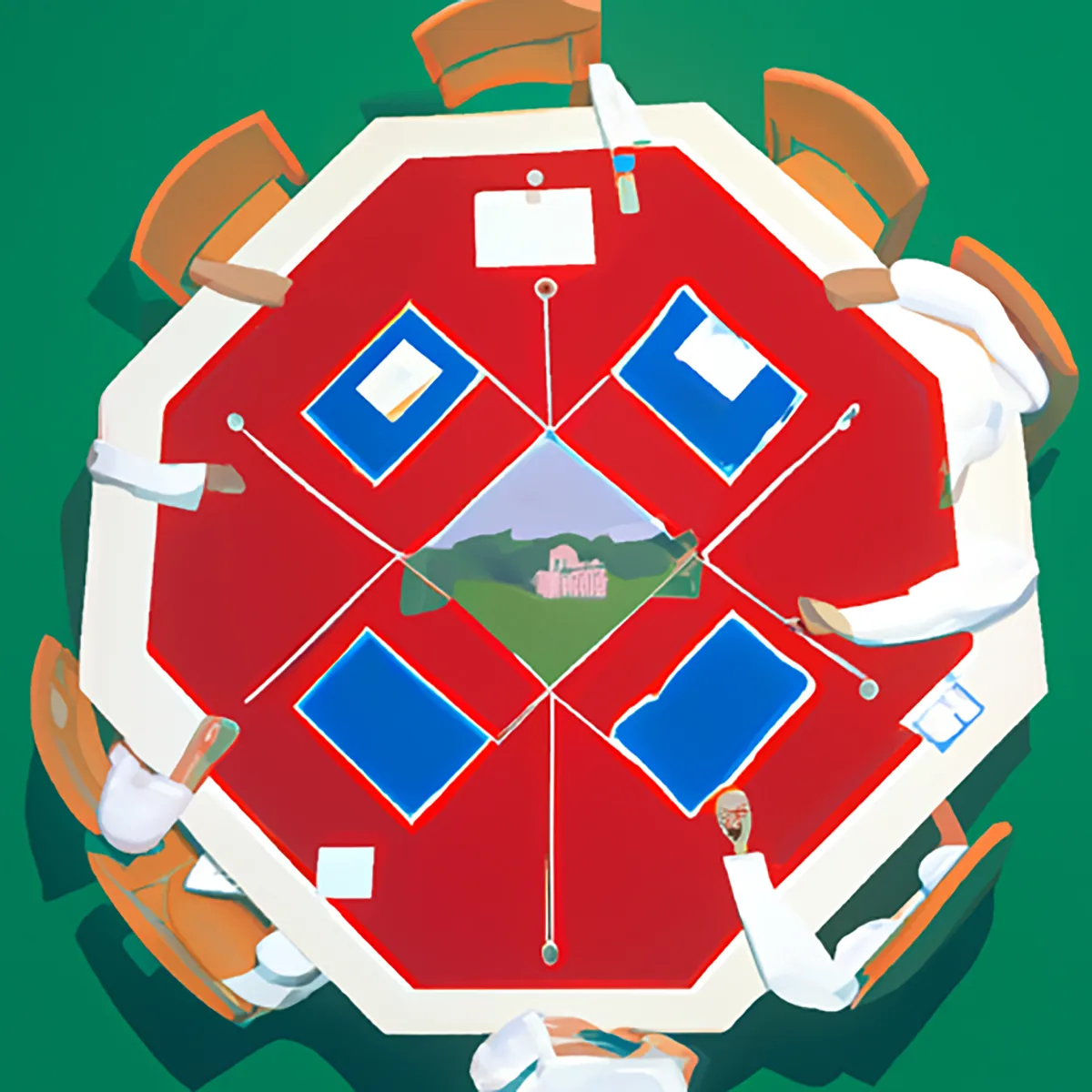Collaboration
Team Self-Assessment
The structured process is intended for teams to examine their collaborative efforts. The strict framework facilitates team members to express themselves candidly during the evaluation. Following individual introspection, the team collaborates to create a collective map that can be used as a foundation for future conversations and initiatives. The evaluation is centered on six dimensions, each of which prompts the team to contemplate and scrutinize a distinct and vital aspect of their conduct.

Workshop steps
Think of your team as a system, similar to an Operating System (OS) in the software industry. It's complex and has multiple interconnected parts that support people to work effectively and improve over time through small, continuous changes. This workshop is crucial for any team looking to upgrade its OS and enhance its working methods. Most teams develop organically, without much focus on designing the work process, examining interpersonal relationships, or questioning traditional hierarchy structures. To make improvements, start by having your team conduct a self-assessment to identify implicit issues and make them explicit. This allows the team to discuss and address these issues. Use the following six dimensions to guide the reflection and conversation: 1. Team Relations & Environment 2. Information & Decision-Making 3. Responsibility & Accountability 4. Learning & Individual Purpose 5. Collective Purpose 6. Profit & Productivity Display these dimensions on a whiteboard, flipchart paper, or screen for the team to reference. Provide each team member with a sheet of flipchart paper in portrait orientation. Have them draw five horizontal lines to create six equal sections and label each section with a dimension. Next, give the team 30 minutes to silently reflect on these dimensions individually. They should write down statements related to each dimension, completing the sentence: As a team, we... Statements may be positive or critical, celebratory or development-oriented. Instruct team members to arrange their statements on the paper, placing the most development-oriented on the left and the most celebratory on the right.
Using a whiteboard or flipchart, create a big representation of the 6 sections the team has been focusing on. The goal here is to combine everyone's input and identify where the team aligns or differs on the 6 dimensions. Invite each team member to share 2-3 post-it notes from each dimension, simply reading their written statements without further explanation or justification. Remember to place the statements focused on development to the left, and those celebrating achievements to the right.
The goal of this step is to simplify the statements and eliminate obvious repetitions. Ask a team member to quietly group the statements. Once they're done, check with the group if anyone wants to modify the clusters. If so, let them make the changes. Continue this process until everyone agrees on the clustering. It might take a few tries, but eventually, you'll have a set of statements that everyone can accept. This is a decision made through group consensus.
The goal of this step is to identify the statements that the group strongly agrees with. To achieve this, you'll use dot voting. Provide each team member with a sheet of small, uniformly colored sticky dots. This ensures anonymity in voting. Instruct the team members to examine the clustered statements and place a dot on the ones they believe are crucial for the team. These could be issues that need to be addressed, modified, or celebrated. They can use as many dots as they want. Once everyone has finished voting, step back and observe the board or flipchart. The distribution, concentration, and frequency of the dots will quickly reveal the team's priorities.
In this final step, our goal is to convert the workshop insights into a digital format and determine the next actions. Follow these simple steps: 1. Request a volunteer from the group to capture the board/flipchart content as a digital image using their phone. 2. Have the volunteer transfer the captured information into a shareable, editable document, such as a Google Document. 3. Initiate a group discussion to decide how to utilize this information. Consider these suggestions: - Celebrate the positive statements in a formal manner. - Plan 6 discussion sessions in the upcoming weeks, each focusing on a development-oriented statement from one of the dimensions. - Share the digital document with another team or present it to the entire company during an All Hands meeting or Brown Bag session. - Schedule the Engineering Your Team OS workshop for next week to intentionally redesign your team's operating system.
Need help with this workshop?

